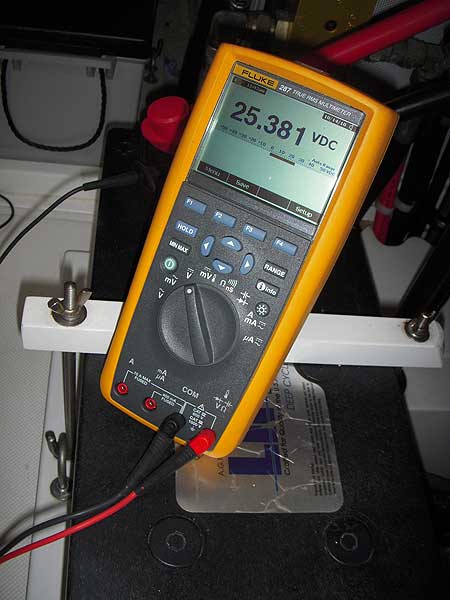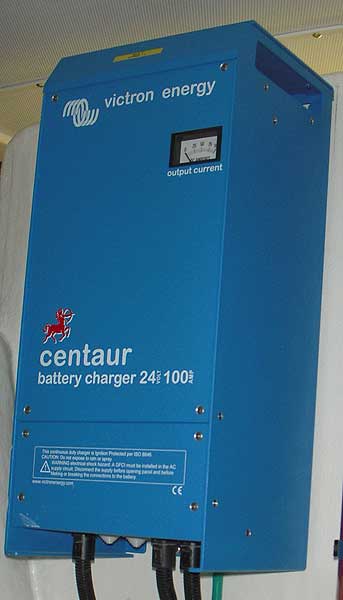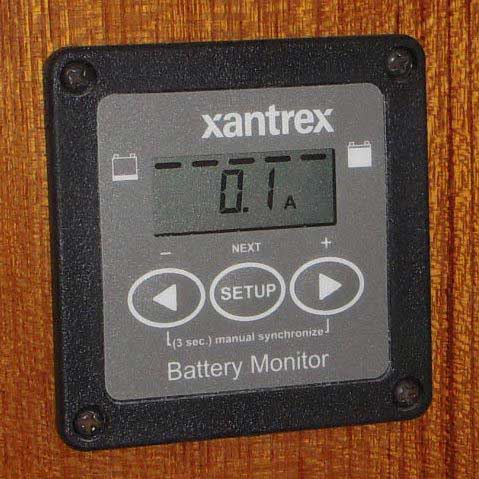Tech Talk - Batteries
Staying in Charge of Your Batteries
Strategies to ensure you’ve always got enough juice.

Our kind of boating wouldn’t be possible without a battery’s ability to conveniently store enough energy to start an engine or two. Add in the high demand for fancy electronics, ample lighting and 24/7 refrigeration and the house battery bank becomes a vital element to any long-range power yacht. Boaters absolutely depend on their batteries to start their engines, preserve their food for weeks or months at a time and light up their interiors – as well as to provide reliable power for communication and navigation equipment.
This is precisely why so many boat owners and captains are always nervous about their batteries. Are my batteries getting enough charge? Can I leave the boat for a few days without discharging them too much? How can I tell how healthy they are? And who can blame them – a boat full of dead batteries means no way to start an engine and no way to keep the food from spoiling – and possibly no way to keep the boat from sinking if something happens and there’s no power to run the bilge pump.

Unlike a fuel tank, which is really just another device for storing energy, there’s no way to just look at a battery and tell whether it’s full or empty. Add in all the confusion of electrical terminology – state of charge, amp hours, open circuit voltage, etc. – and many owner/operators are left without an easy way to determine the level of remaining energy in their batteries. Most owners are very diligent when it comes to knowing how much fuel they’ve got left aboard, and it seems like they’d also like to be able to know exactly how much juice they’ve got left in their batteries at any given time – or to at least know they’ve got “enough” juice to handle the load.
Three solutions come to mind if the ultimate goal is to ensure adequate battery capacity.

The first will appeal to the owner who enjoys keeping daily logs and working with testing equipment. All Nordhavns have multiple house battery banks, which allows the operator to isolate each bank for monitoring. After a battery bank has been isolated and allowed to rest for at least 4 hours (longer is better), a simple open-circuit voltage test can be used to determine the relative health of the battery or batteries in the isolated bank. While the bank is isolated, take a voltage reading across the battery posts (single battery for a 12-volt system, two batteries in series for a 24-volt system) and use the table from Lifeline Batteries below to determine the state of charge for the isolated battery or batteries.


Doing this for each battery bank over a series of days and weeks will give the owner a very good idea of how much battery power his particular boating routine actually consumes. Eventually the owner will intuitively “know” where his batteries are at based on how the boat is being used. This process can also be used for the engine starting batteries, which on a Nordhavn are always separate from the house batteries. While the engine is off, just isolate the engine starting battery or batteries using the MAIN ENGINE NORMALLY ON battery disconnect switch and complete the test (do not isolate the starting battery or batteries while an engine is running – this can damage the engine starting battery charging alternator).
The second approach, and the one probably used by most owners, is to simply charge the batteries and charge them often. If the batteries are always being charged, there’s not much to worry about. At the dock, shore power is keeping the batteries topped off. After a night on the hook, the generator is fired up in the morning to make sure the batteries get a good fast charge via an inverter/charger or dedicated battery charger. While cruising, the main engine house alternator is doing the job. In fact, this is precisely what the “NET BATTER AMPS” meter is for on all Nordhavns.
While cruising it is not unusual to have high a 24-volt demand. 24-volt halogen lights, navigation and communications equipment and inverter loads like refrigerators, freezers, entertainment equipment and other creature comforts can many times exceed the capacity of the main engine house alternator. In this case the reading on the NET BATTERY AMPS meter will go negative (-) to indicate the house batteries are no longer being charged and are actually being discharged to help meet the electrical demand. Here it’s good to use a little math to determine how long until the generator should be brought online to charge the batteries.

Assume fully charged batteries and a constant draw of negative (-) 45 amps on the NET BATTERY AMPS meter on a typical Nordhavn 55 with eight Lifeline 8D house batteries arranged into four pairs for 24-volt service. Each 24-volt battery pair is good for 255 amp hours (Ah), for a total of 1,020 Ah. However, the recommendation is to never discharge the batteries past 50%, so we’re actually looking at a total of 510 Ah available. Divide the 510 Ah by 20 hours (battery ratings are based on 20 hours) to get 25.5 amps – this means a constant discharge of 25.5 amps would bring the batteries down to 50% discharge in 20 hours.
We’ve got a constant discharge of 45 amps, so we divide 510 Ah by 45 amps to get 11.3 hours until 50% discharge (in reality, it will be closer to 9 hours for the higher discharge rate of 45 amps to bring the batteries down because higher current draws speed up the rate of discharge). Obviously the math gets a little messy here, and if you find you’re always cruising in the negative on your NET BATTERY AMPS meter you might want to look for non-essential loads to shed.

A third option to keep tabs on the batteries is to install a dedicated battery monitor. These units work like tank level gauges to give the operator a real-time indication of how much battery capacity remains. They also raise the bar in terms of accuracy by figuring in some of the factors that can affect battery capacity and performance, like temperature, battery age and discharge current. These are great for owners who really like to know exactly where things are at with their batteries at all times. A few recent Nordhavn buyers have had the LinkPro from Xantrex, the Masterlink BTM-III from Mastervolt and the BVM series from Victron installed.

An important side note to any battery monitoring/charging routine is to avoid prolonged periods of discharge, or incomplete charging. Allowing batteries to sit in a partially or excessively discharged state for an extended period of time, or using a low charging voltage or repeatedly charging to only 90%, can result in a loss of overall capacity. There are methods of reviving batteries after these kinds of capacity losses, but it’s definitely better to just avoid them in the first place.
At the end of the day the real mission is to ensure the batteries are capable of doing their job while also ensuring they are being used in such a way as to maximize battery life. Between these three strategies, as well as others found in boating books and magazines, every owner should be able to find a battery monitoring routine that works for him.